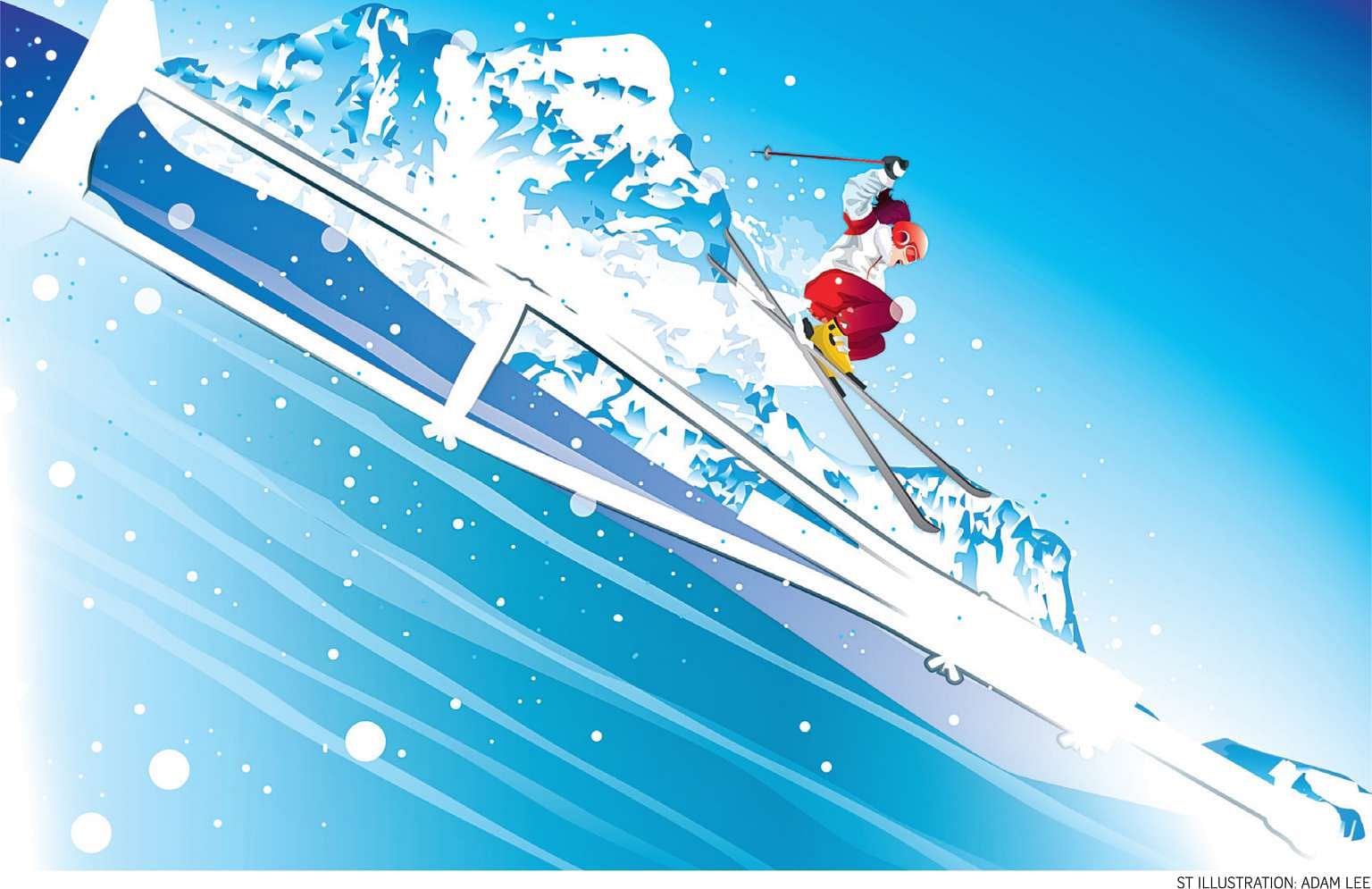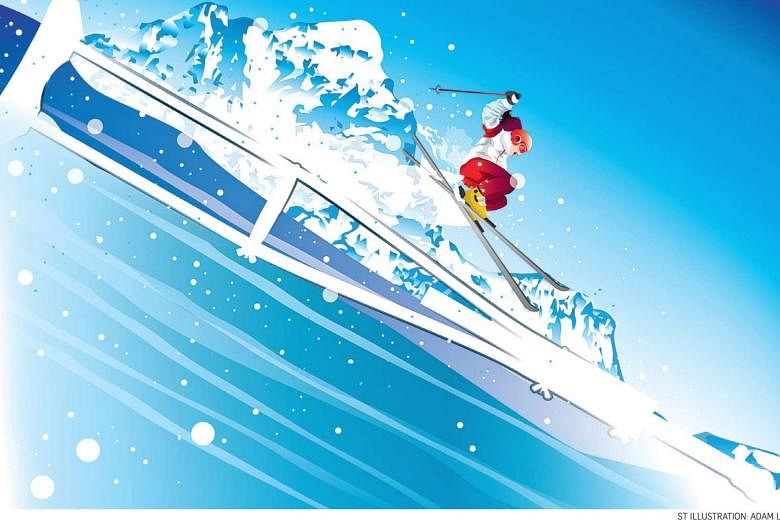Last December, Lily headed to Niseko in Japan for a skiing trip with her husband and five-year-old son.
There, the 36-year-old took ski lessons and started skiing.
Unfortunately, as she was descending a gentle beginner's slope on the third day, she fell.
Her skis failed to detach from her boots and she twisted her left knee as she fell over the left ski. Thankfully, her right knee was not affected.
She was in pain. Her left knee was swollen and she stopped skiing that day. She visited the local clinic which gave her a pair of crutches and reassured her that a fracture was not likely as she was still able to bear weight on the limb.
I saw her after she returned to Singapore a few days later. Checks, including an MRI scan, confirmed that Lily had torn two of her knee ligaments - the ACL (anterior cruciate ligament) and the MCL (medial collateral ligament).

In the past few years, I have noticed an increase in the number of ski-related injuries at the clinic where I am based. This might be due to the increasing popularity of skiing as a holiday sport.
Also, many adults are picking up the sport for the first time. Furthermore, as many Singaporeans tend to prefer jogging and gym workouts, their core strength and balancing ability are usually not well-developed.
Thus, they have a higher risk of injuries, compared to those who have done winter sports from young, for instance.
Some of the most frequent skiing injuries we see at the clinic involve the knee. Skiing puts a lot of strain on the knees because our ankles are locked in ski boots that are attached to the skis.
When a fall occurs, the skis sometimes do not detach from the boot. They can get caught in the snow, resulting in the body pivoting over the knee, as in Lily's case. This commonly results in ligament injuries which involve the MCL as well as the ACL.
For MCL injuries, most of the time, thankfully, treatment using a knee brace is sufficient for the ligament to heal.
However, when the ACL is torn, the ligament typically does not heal on its own and surgical reconstruction is recommended.
It is also fairly common for the more advanced skier to fall on the slopes. Most of the time, the injuries are not serious but a more significant injury, such as a ligament rupture or fracture, can happen.
EXPERIENCED SKIERS FALL TOO
Paul, 49, a lawyer working in Singapore, grew up in Europe and had been skiing since he was a child. He made it a point to go skiing every year.
In January this year, while skiing down an easy slope in the French Alps with his daughter, he fell.
He was in severe pain and had to be evacuated to the clinic there.
Paul was surprised as he was an experienced skier. The doctor there told him he had a bad ankle fracture and put him in a long cast, from his thigh to his toes. He was given blood-thinning injections to prevent blood clots in the leg during his flight back to Singapore.
When I saw Paul at the clinic, the X-rays showed a serious fracture of the lower end of his tibia (leg bone) and multiple bone fragments in the ankle joint. He had to undergo surgery as the fragments had to be pieced back carefully to reconstruct the ankle joint surface.
Such ankle injuries are not common in skiers as ski boots, being quite rigid, tend to protect the ankles from being twisted.
However, when the injuries happen, they tend to be serious. They can include fractures of the tibia near the ankle joint or atypical ankle ligament injuries that are more difficult to treat.
Skiers can also injure their wrists and shoulders when they use their arms to break their fall.
Head and spinal injuries, though less common, can have serious consequences. Former F1 champion Michael Schumacher sustained severe head injuries in 2013 after smashing into a rock while skiing and was put in a medically-induced coma for nearly six months. The accident would have been fatal if he had not worn a helmet.
My advice for skiers would be to strengthen their core before a ski trip. Exercises to strengthen the core muscles around the back, abdomen, hips and thighs will help prevent injury. Proper equipment, including a helmet, boots and skis, will help prevent falls.
As bad falls occur more often when we are tired from a day of skiing or after a few days of skiing, it is also important to pace ourselves and know our limits.
•Dr Tan Ken Jin is an orthopaedic surgeon at the Orthosports Clinic at Mount Elizabeth Novena Medical Centre. He specialises in foot and ankle disorders, and sports injuries.

